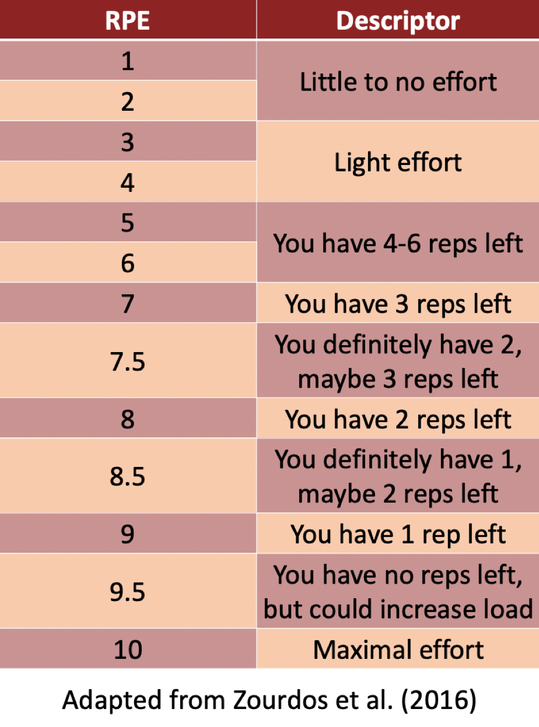I have often said that it’s as complicated as you want to make it. The mentality of ‘just pick up heavy stuff’ will only get you so far. As you improve, your training must evolve. Lifting is a game of diminishing returns. When you start, you can grow muscle just by looking at a dumbbell. You will be able to lift more weight or do more reps in almost every session without having to think about it. Alas, a few months later, your progress slows down. Sometimes, it stops altogether. What do you do now? You need to become more strategic. This article aims to arm you with some knowledge to keep getting results from your training. First things first… Why do you need to keep making progress? Intuitively, you can guess that doing 3 sets of 8 with 10kg dumbbells from the first session of your life to the last one, some fifty years later, might not be the most effective way to gain more muscle. Over time, your body will adapt to this load and reps. Adapting means that the body becomes more efficient at handling this very specific stress – exercise X done with Y load for Z reps – in order to reduce the chances that it will kill you. Smart, huh? When the body stops adapting, you become able to lift with relative ease the Y load for Z reps that were really challenging in the beginning. This is not a good thing if we want to grow more muscle. To make hypertrophy (muscle growth) happen, we need to provide a sufficient stimulus to our muscle fibres. These fibres can grow more or less depending on their type, with those that can generate the most force – called fast twitch muscle fibres – also being the biggest and having the greatest potential for growth. The closer you get to muscular failure – when your muscles “fail” to complete one more rep with proper form – the more muscle fibres you are going to recruit in order to lift that load. In particular, the strongest fast twitch muscle fibres are recruited at the very last minute. So, when your training becomes too easy as a result of all the adaptations the body has undergone, you may not be able to stimulate all of your muscle fibres to grow unless you keep challenging the body and forcing it to continue adapting. Fortunately, this can be as simple as changing the amount of weight you use or the number of reps or sets your perform. In fact, the four strategies I will outline below manipulate load, reps, and sets in some combination. Let’s get into them: Progression Strategy 1: Linear or Single Progression Linear or single progression is a basic approach that mainly manipulates the weight you use. You choose a number of repetitions that is appropriate for your goal, pick a load that challenges you but still allows you to maintain good form, and then you increase the load when it isn’t challenging anymore. This strategy might be best suited to beginner lifters, who tend to be able to make progress from one session to the next on a regular basis. The reason for this is that, when you first start training, you are as far from your genetic ceiling as you will ever be. The “genetic ceiling” is the maximum amount of adaptations you can achieve and muscle mass you can develop based on your genes. At this stage, progress will occur faster than ever, so applying linear progression will allow you to see improvements in every session. For example, if in Week 1 you achieve 10 reps with 20kg, you can add 2.5kg the following week and almost certainly expect to achieve 10 reps again, provided your physical conditions are similar. When you can’t hit the same reps with an increased load, it doesn’t necessarily mean you are too advanced to continue using this method. You can try to hit the target reps with the increased load again in the following session and, if this doesn’t happen, you can implement a deload session. When “deloading”, you reduce the amount of work you do for a session, a few days, or an entire week, in order to drop the fatigue you will have accumulated after weeks of hard training. Beginners might not need very frequent or prolonged deloads, so you can wait to use one until you see that your performance has stalled, and then perform a single lighter session. In this deload session, you can reduce the load you were previously lifting by about 10%, or use the same load but perform 1/3 fewer reps. Using the example given earlier, you could do 10 reps with 18kg instead of 20kg, or still use 20kg but perform 6 reps instead of 10. In the next session, try to hit the load where your performance stalled. If you have successfully reduced your fatigue with the deload, you may be able to overcome your plateau and resume linear progression until you come across another plateau and thus need another deload. Progression Strategy 2: Double Progression This strategy manipulates reps first, then load. To implement it, you choose a repetition range, for example 10 to 12, and a load with which you can do 10 reps, but you have maybe 2 or 3 left before you hit failure. Session by session, or week by week, your goal is to get to perform 12 reps on all sets with that load. Once you achieve this, you increase the load and start again from 10 reps. The reason why this is called “double progression” is that you progress reps first, then load, then you rinse and repeat. This strategy is suited to someone who can’t progress load as fast as a beginner, but can instead increase reps on a session-to-session or weekly basis. It also works well with isolation exercises for both beginners and more advanced lifters. Isolation exercises target a single muscle or muscle group at a time instead of many muscle or muscle groups, like compound lifts do. An example would be a biceps curl. It would be unrealistic to expect to add even 1kg every session, week, or month, or else we would all be curling 100kg in three months. For this reason, using a double progression strategy that focuses on increasing reps before load will allow you to make progress and maintain good technique on lifts where load progression is bound to plateau really soon. Progression Strategy 3: Triple Progression This method manipulates reps, sets, and finally load. For example, you aim to do 3 sets of 10 to 12 reps with a certain weight. You may achieve 3 sets of 12, but, when you try to increase the load, you miss your rep target for a number of sessions in a row, even if you deload. So, instead of aiming for more load, you can add one or more sets, so that you progress from 3 sets of 12 to 4 or 5 sets of 12. At that point, you attempt to increase the load again. If you choose this strategy, be mindful of the maximum number of sets you can recover from within a single session and throughout a week of training. In order to gauge how much volume to do without compromising recovery and therefore results, I like to use the Training Volume Landmarks, a concept popularised by Dr. Mike Israetel from Renaissance Periodization. If you are not sure about your Maximum Recoverable Volume (MRV) and Maximum Adaptive Volume (MAV), you can start with the general recommendation to do 10 to 20 sets per muscle or muscle group per week. So, when employing triple progression, you may not want to go over 20 sets per week unless you are absolutely sure that you recover well and, in fact, make more gains by doing more. Within a single session, you may want to avoid doing much more than 8 to 12 sets per individual muscle or muscle group, as suggested by Dr. James Krieger. Past this point, you may start doing “junk volume”, that is extra volume that does not help build additional muscle and only affects your ability to recover. Progression Strategy 4: Rating of Perceived Exertion (RPE) or Reps in Reserve (RIR) This is a progression strategy I have personally used in my own training for over a year, and have more recently been applying to some of my clients’ programs. It is based on the RPE scale for strength training first spoken about by Mike Tuscherer and then utilised in a study by Dr. Mike Zourdos in 2016. The RPE scale for strength training looks like this: Based on the current research, it seems that, as long as you end a set at least 4 or 5 reps shy of failure, you will provide sufficient stimulus for muscle growth whether you use heavier loads or lighter loads.
Applying this concept to training, this is an example of how to program a four-week mesocycle:
You may find that you can improve at a faster rate than what I outlined above. For instance, you may be able to use 50kg and fail at 12 reps in Week 1 (RPE 10). In Week 3, you may have got stronger, and what should be your RPE 9 (11 reps) now feels like RPE 8. In this case, if it is safe for you to do so and you can recover from it pretty well, you can take the first set of each exercise to failure every week or every couple of weeks in the first session for that specific muscle group, then re-assess the RPE for the following sets. Final Thoughts There are many ways to progress your training that aren’t limited to “add weight or die”. If you feel you are currently spinning your wheels, try one of the strategies mentioned in this article and see if you can get your progress moving again. Your Turn: Which approach do you like to use in your own sessions?
0 Comments
Your comment will be posted after it is approved.
Leave a Reply. |
Nikias TomasielloWelcome to my blog. I’m an online fitness coach with a passion for bodybuilding, fantasy, and bread. Want to work with me? Check out my services!Archives
May 2024
Tags
All
|
Follow me on social media |
Get in touch |
© 2018-2023 Veronica Tomasiello, known as Nikias Tomasiello – All rights reserved



 RSS Feed
RSS Feed